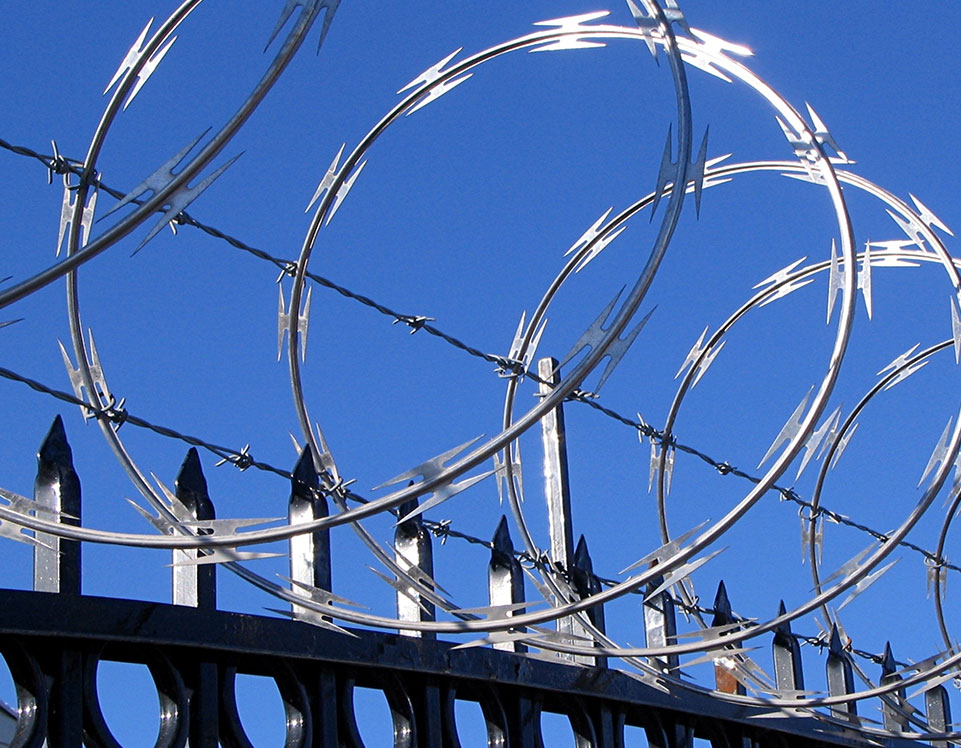How Fiber Security Helps Prevent Intrusions and Improves Surveillance
How Fiber Security Helps Prevent Intrusions and Improves Surveillance
Blog Article
The Ultimate Guide to Fiber Optic Safety Solutions for Your Organization
In a period where safety and security concerns are extremely important for services, comprehending the complexities of fiber optic modern technology can be transformative. This overview outlines just how integrating fiber optic protection systems not only enhances information protection yet also supplies advantages like resistance to disturbance and real-time tracking capabilities.
Recognizing Fiber Optic Innovation

The core of a fiber optic wire is composed of a slim glass or plastic center, bordered by a cladding layer that mirrors light back into the core. Single-mode fibers are created for long-distance transmission, while multi-mode fibers are ideal for shorter distances, usually used within structures.
Optical fiber are not only faster yet also a lot more safe and secure than conventional electrical wiring. Their integral resistance to electromagnetic interference and the problem of using the signal without detection make them a preferred option for services focusing on information integrity and safety and security. As companies significantly depend on secure and efficient communication systems, comprehending fiber optic innovation comes to be crucial for informed decision-making.
Key Benefits of Fiber Optic Safety And Security
When thinking about safety and security choices for a service, the benefits of fiber optic systems are especially engaging. Fiber optic innovation provides extraordinary data transmission speeds and bandwidth ability, making it excellent for taking care of high-resolution video clip feeds from monitoring cams. This ability guarantees that security employees obtain real-time information, enhancing overall feedback times to prospective safety risks.
Moreover, fiber optic wires are inherently resistant to electro-magnetic interference, which can compromise the integrity of traditional copper-based systems. This resistance makes certain that the information transferred remains secure and nonstop, supplying a much more trustworthy safety and security infrastructure. In addition, fiber optics are less at risk to physical damage, as they are made from glass instead of steel, minimizing maintenance costs and downtime.
Another substantial benefit is the increased scalability of fiber optic systems. As organization requirements progress, fiber networks can be easily increased to fit additional safety devices without considerable overhauls to the existing infrastructure. Lastly, fiber optic systems use improved cybersecurity attributes, including security capabilities that secure delicate data from unauthorized accessibility. Jointly, these benefits make fiber optic safety and security systems a durable selection for businesses seeking to improve their protection measures.
Installation Process and Considerations
Taking into consideration the intricacies entailed, the installment procedure of fiber optic security systems requires careful preparation and implementation. The first action includes a detailed website evaluation to determine ideal locations for cabling and equipment. This assessment should take into consideration ecological variables, existing framework, and prospective vulnerabilities.

Additionally, the installation has to abide with neighborhood building regulations and market requirements. This may consist of collaborating with different stakeholders such as building managers, IT groups, and safety workers to make sure seamless assimilation with existing systems.
Post-installation, strenuous testing is required to verify system efficiency and determine any concerns that might occur. By focusing on these factors to consider during the installation procedure, services can guarantee a durable and efficient fiber optic security system that fulfills their certain safety and security needs.
Most Current Developments in Fiber Optic Security
Current advancements in fiber optic modern technology have dramatically improved the capacities of safety systems for businesses. Among the most significant innovations is the assimilation of fiber optic sensors that can identify vibrations and breaches along the boundary of a center. These sensing straight from the source units provide real-time surveillance, enabling fast response to prospective violations.
Furthermore, the growth of dispersed fiber optic sensing innovation permits the continuous tracking of huge areas with a single fiber cord. This method not only minimizes installment costs however additionally improves the reliability of checking systems by eliminating the need for several, different sensing units.
Furthermore, developments in multiplexing methods have actually made it possible for businesses to transmit large quantities of information over fiber optic networks, boosting the capacities of video surveillance systems. High-definition video feeds can now be sent out over cross countries without loss of high quality, making certain that protection personnel have access to clear and workable information.
Last but not least, making use of expert system (AI) in conjunction with fiber optic systems is revolutionizing risk detection. AI algorithms can analyze data from fiber optic networks to identify uncommon patterns or actions, permitting for aggressive protection actions. These technologies jointly stand for a considerable leap forward in fiber optic safety and security technology.
Choosing the Right System for Your Organization
Picking the proper fiber optic safety system for your company is important for guaranteeing optimal defense and tranquility of mind. To make an educated choice, assess your details safety requirements, considering variables such as the dimension of your premises, the nature of your procedures, and prospective vulnerabilities.
Begin by reviewing the degree of safety and security called for; for circumstances, high-risk settings may necessitate innovative systems with integrated security and invasion detection abilities. Next, take into consideration scalability; as your company expands, your safety system should be qualified of expanding to suit enhanced needs without considerable overhauls.
In addition, examine the dependability and efficiency of numerous systems. Look for companies with well-known track records and client endorsements that vouch for their service high quality. It's likewise a good idea to ask about the technology's compatibility with existing infrastructure, guaranteeing a smooth assimilation procedure.
Verdict
In verdict, fiber optic safety systems provide a robust remedy for boosting company security frameworks. The most current developments further boost the performance of these systems, making sure that businesses continue to be like it protected and versatile in an ever-evolving danger landscape.
Report this page